Reports
Where are Iran’s new centrifuge manufacturing capabilities?
by David Albright, Sarah Burkhard, and Spencer Faragasso
February 16, 2022
Recent reporting that Iran has moved its centrifuge manufacturing capabilities from the TESA/TABA manufacturing facility near Karaj to Esfahan led us to examine the main Esfahan site. In this report, we focus our visual analysis on new activity at the existing underground tunnel complex at Esfahan, which was constructed in 2004-2006. It has three tunnel entrance areas leading under a mountain that is over 6000 feet tall. The tunnel entrance areas remained relatively unchanged for years; however, that changed in late 2020 or early 2021 when commercially available satellite images showed new construction activity at all three tunnel locations, leading to additions of metal structures, possibly for entrance shielding and protection from rockfall, at all four visible tunnel portals.
On January 31, 2022, the International Atomic Energy Agency (IAEA) reported that Iran has moved sensitive centrifuge manufacturing capabilities from Karaj to an unspecified site at Esfahan.1 According to the report, the new workshop to make centrifuge rotor tubes and bellows was not operating as of January 24, 2022.
The exact location of this new workshop has yet to be revealed publicly. A possible candidate is the main Esfahan site, a large nuclear complex with many buildings and nuclear functions. However, other locations exist near Esfahan, such as a large industrial compound south of Esfahan called 7th of Tir Industries, and nearby, Farayand Technique, which had earlier ties with Iran’s centrifuge manufacturing program and is believed today to have proper expertise and possibly the tools needed to manufacture high strength components of advanced centrifuges, in particular the carbon fiber rotor tubes and bellows.2
Here, however, we focus our initial analysis on the Esfahan nuclear site. Figure 1 shows an overview of the main Esfahan site, a large site including the Uranium Conversion Facility (UCF) complex with several uranium conversion or fabrication facilities, the Zirconium Production Plant (ZPP), and a tunnel complex to the north. Some additional buildings are identified in the figure. No new buildings are visible in satellite imagery, apart from construction work in the north-east corner of the ZPP, but this particular construction appears an unlikely candidate for centrifuge manufacturing as it is not externally complete as of the end of January 2022. Iran could have repurposed one of many of the existing buildings at Esfahan, since the original workshops at Karaj were not large. Alternatively, Iran may have decided to place the centrifuge manufacturing site underground. Undoubtedly, the location of the centrifuge manufacturing workshop will become public and any of the above locations remain a possibility. Because of recent construction activity at the tunnel complex, however, we decided to look more closely at this facility.
The tunnel complex to the north of the main site was constructed around 2004-2006. Its existence was first reported publicly by the Institute in February 2005.3 Figure 2 shows a November 2021 terrain-view in Google Earth of the three tunnel entrance areas, a northern, mid, and southern entrance area, each separated from the next by about 260 meters.
The IAEA first visited the tunnel complex in December 2004, when at the time no equipment was present in the tunnels.4 In 2005, when the Institute first reported the tunnel complex, we assessed, “Iran declared to the IAEA in the fall of 2004 that the tunnel facility is for storage and other activities that are part of the UCF. It appears too big to be only for storage.”5 A former senior IAEA inspector who visited the Esfahan tunnel complex confirmed that there is enough space to house the new workshops for making rotor tubes and bellows.
At this point, the reasons for Iran’s decision to move centrifuge manufacturing to Esfahan are unknown, but one possible reason is additional security, especially if the manufacturing workshops were moved into the underground tunnel complex at Esfahan. In the context of centrifuge assembly at Natanz, Ali Akbar Salehi, the then-head of the Atomic Energy Organization of Iran (AEOI) stated in April 2021, “We are working 24/7 to move all our sensitive halls into the heart of the mountain near Natanz.”6 Salehi was specifically referring to Natanz, but one has to wonder whether Iran has been implementing a broader effort to move its sensitive centrifuge production capabilities underground since the July 2020 attack on its centrifuge assembly center.
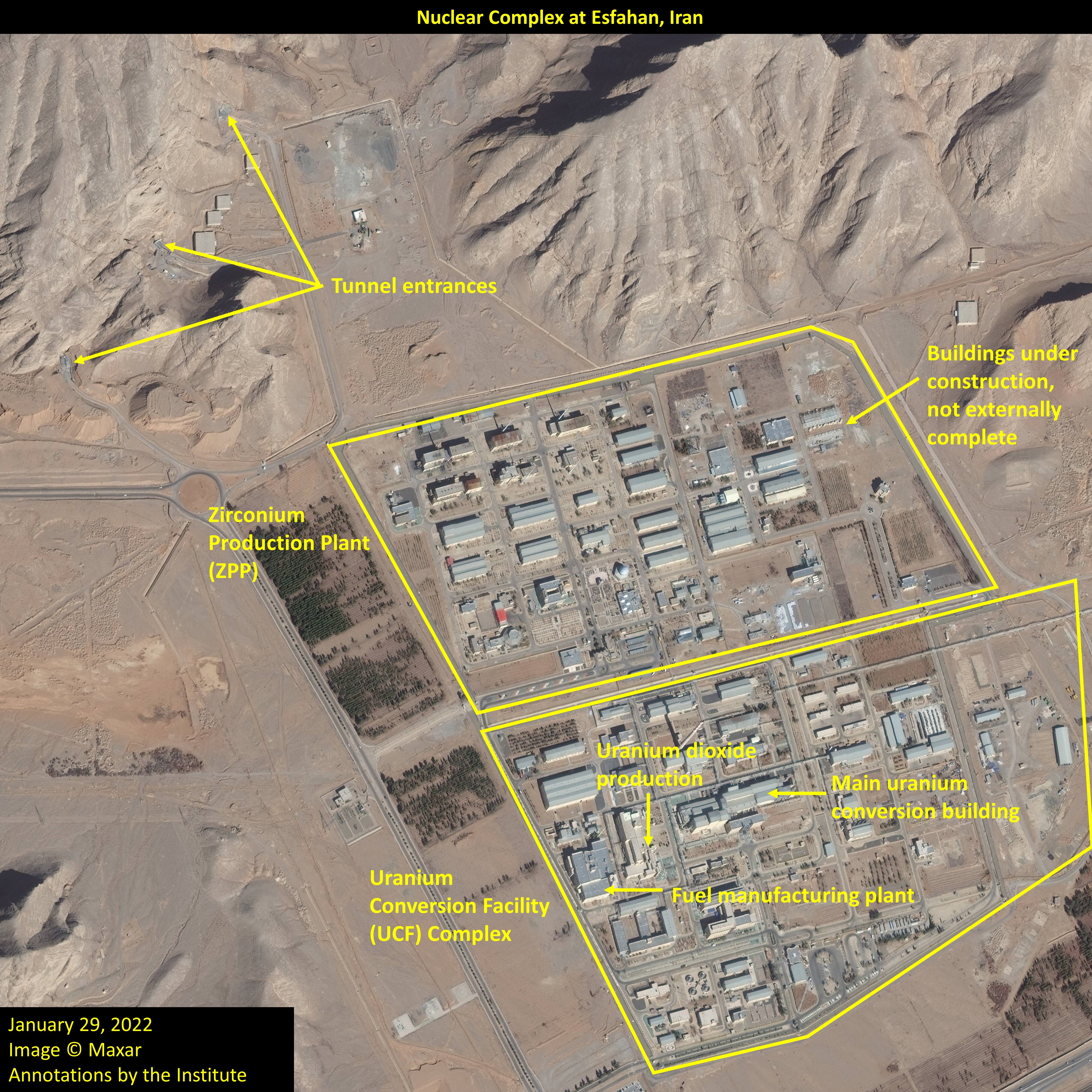
Figure 1. Overview of the Esfahan nuclear site in Iran, which includes the Uranium Conversion Facility (UCF) complex, Zirconium Production Plant (ZPP), and a tunnel complex. (In the Zirconium Production Plant area, there is also a building which features the logo of a company associated with uranium metal production.)
Figure 2. A Google Earth terrain view of the mountain harboring the tunnel complex and its three entrance areas.
North Entrance
At an elevation of 5400 feet, the northern entrance lies about 600 feet, or 180 meters, below the relative mountain peak, although it is unclear how far the tunnels reach beneath the mountain. The northern entrance remained relatively unchanged from 2009 throughout 2020. At times, satellite images in Google Earth showed vehicles entering or exiting the portal, including a piece of heavy machinery in December 2019, and another long vehicle, perhaps a bus, in February 2020. Old spoil piles remained outside the entrance, which has a well-paved road and a small shed, possibly for security.
Evidence of newer construction activity first appeared in January 2021, when excavators can be seen at work outside the portal, digging trenches and carving out the hillside near the portal. Figure 3 shows the North entrance in March 2021. Months later, sometime between August 7 and September 7, 2021, a steel structure appeared at the entrance of the portal (see Figure 4).
Figure 3. The North entrance tunnel in March 2021, shortly after construction activity began at this tunnel entrance, which has remained unchanged for many years.
Figure 4. The North entrance tunnel in October 2021, after a steel frame was added to the entrance area.
Mid-Entrance
At an elevation of 5400 feet, the mid-entrance lies about 600 feet below the relative mountain peak. The mid-entrance tunnel area features two portals, although they might not both be connected to the main tunnel; one could be an auxiliary underground storage area. The entrance appeared relatively unchanged from 2009 through November 2020. Figure 5 shows the entrance areas in October 2020, with its relatively large, cleared area and visible turnaround tire tracks. A row of three buildings and a fourth one off to the side are situated in a depression.
By January 2021, activity can be seen at the center area outside the underground portals. Between April and May 2021, construction materials began to accumulate in a nearby cleared area. A number of vehicles can be seen in the area, including passenger vehicles and trucks. By August 2021, reinforced side structures and steel frames were added to both portals. Figure 6, dated in November 2021, shows the new additions as well as remaining construction material.
Figure 5. The two underground portals in the mid-entrance area in October 2020.
Figure 6. The two underground portals in the mid-entrance area in November 2021 after construction activity.
South Entrance
At an elevation of 5350 feet, the South entrance lies about 650 feet below the relative mountain peak. Again, this tunnel entrance remained largely unchanged between 2009 and late 2020. It was the only entrance with a pre-existing steel frame, first clearly visible in Google Earth in February 2009. In addition, the imagery shows buildings butted against the hillside with possible ducting coming out of the tunnel. The buildings along the hillside were covered under one roof in 2019 (see Figure 7).
Around October 2020, new development occurred at the entrance with construction equipment and vehicles visible. Over the course of 2020 and 2021, trucks and passenger vehicles can be seen at the site, a new carve-out was added, and the paved area leading to the portal was expanded, as shown in Figure 8.
Figure 7. The South entrance tunnel as of July 2020.
Figure 8. The South entrance in November 2021 after a year of construction activity.
1. Francois Murphy, “Iran moves centrifuge-parts production out of disputed workshop, IAEA says,” Reuters, January 31, 2022, https://www.reuters.com/world/middle-east/iran-moves-centrifuge-parts-production-karaj-isfahan-iaea-says-2022-01-31/ ↩
2. David Albright, Paul Brannan, and Jacqueline Shire, “Can military strikes destroy Iran’s gas centrifuge program? Probably not.” Institute for Science and International Security, August 7, 2008, https://www.isis-online.org/publications/iran/Centrifuge_Manufacturing_7August2008.pdf. ↩
3. “New Satellite Images Show Tunnel Construction at Esfahan Facility in Iran,” February 17, 2005, Institute for Science and International Security, https://isis-online.org/publications/iran/esfahantunnels.html. ↩
4. “New Satellite Images Show Tunnel Construction at Esfahan Facility in Iran.” ↩
5. “New Satellite Images Show Tunnel Construction at Esfahan Facility in Iran.” ↩
6. MEMRI, “Iranian Nuclear Chief Day Before Natanz Nuclear Facility Blast: We Activated IR-6 Centrifuge Chain,” MEMRI TV Videos, Interview with Ali-Akbar Salehi that aired on channel 1 (Iran) on April 10, 2021, https://www.youtube.com/watch?v=qLmQJOhSusE. ↩

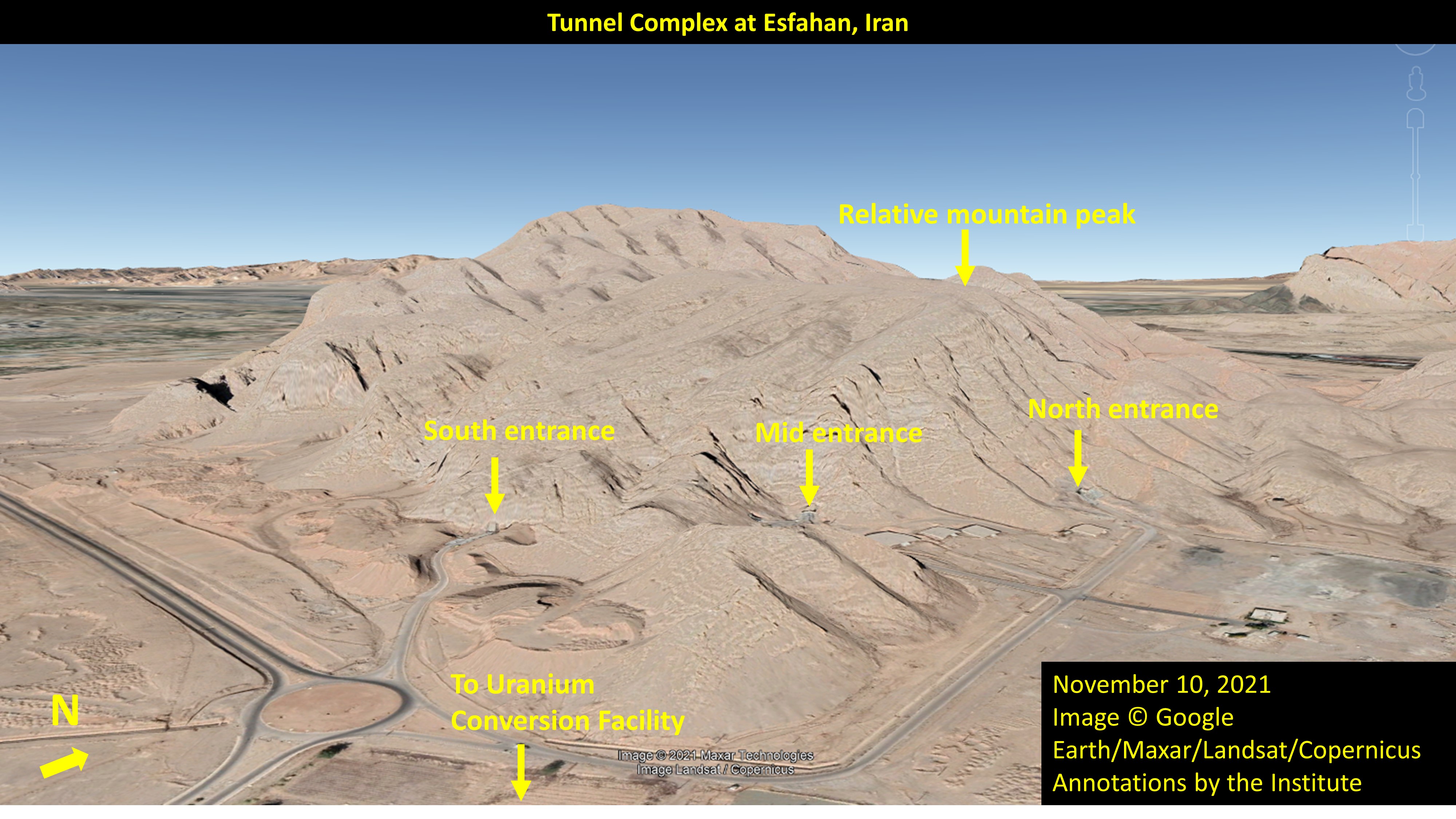
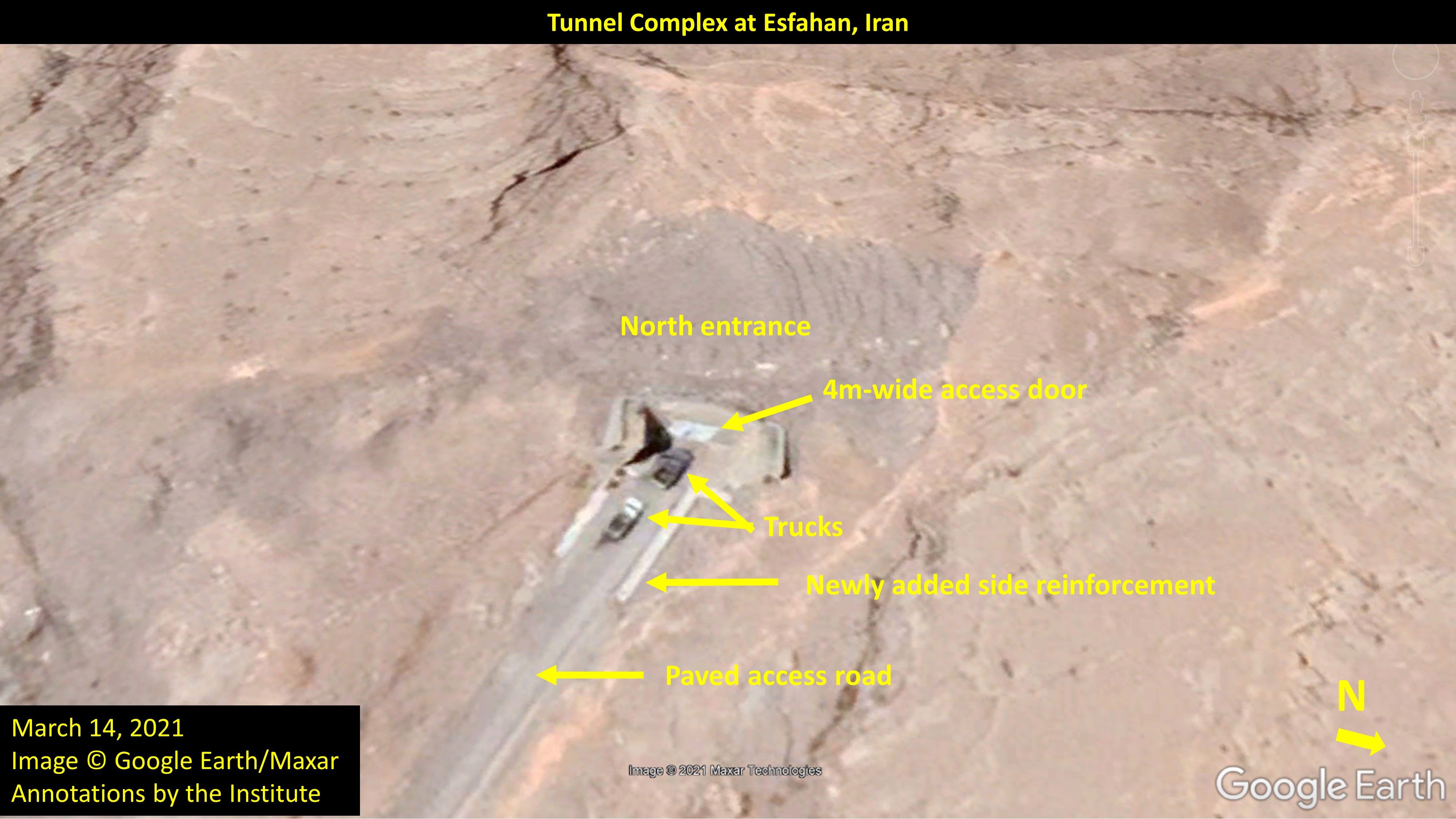
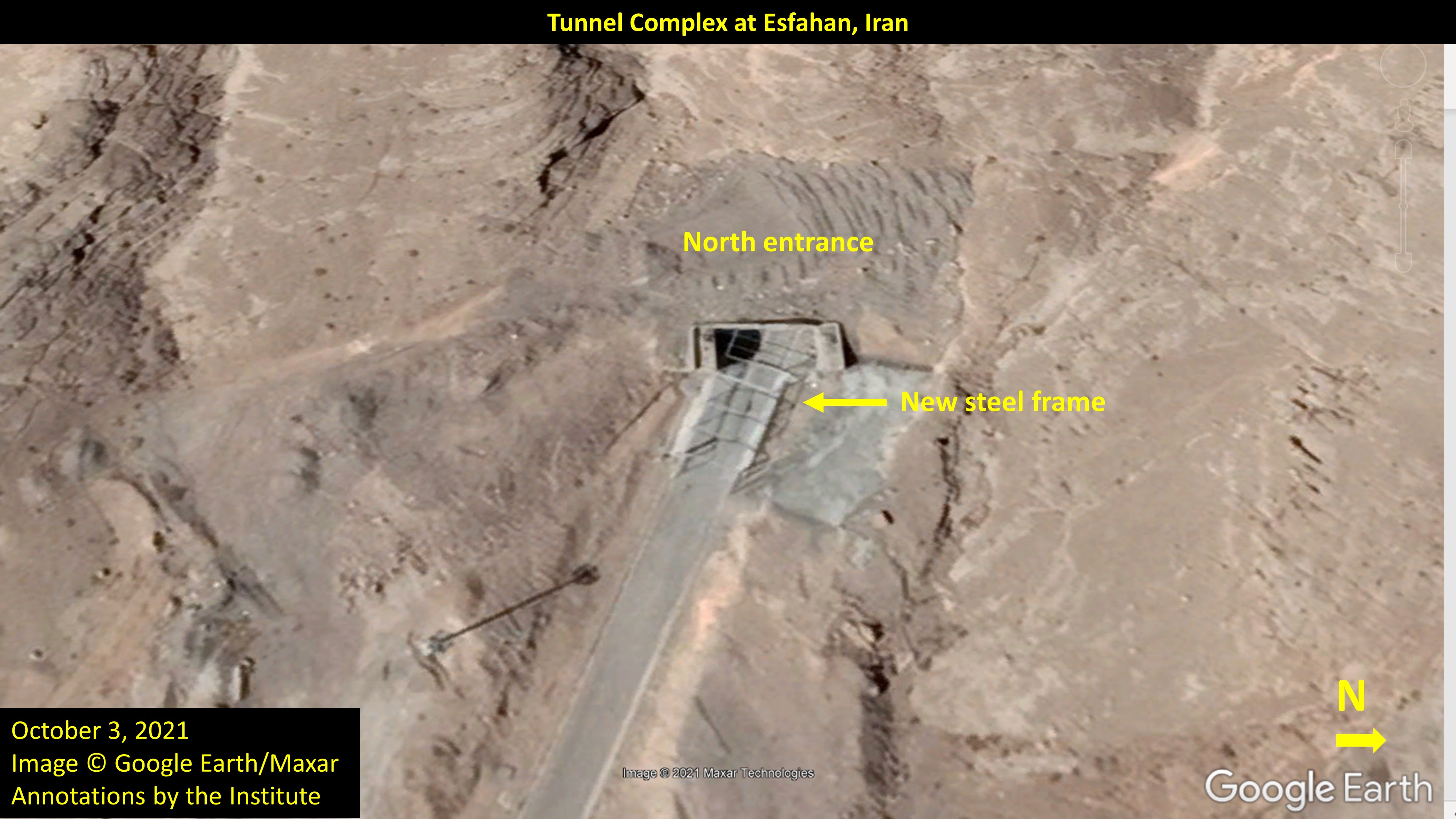
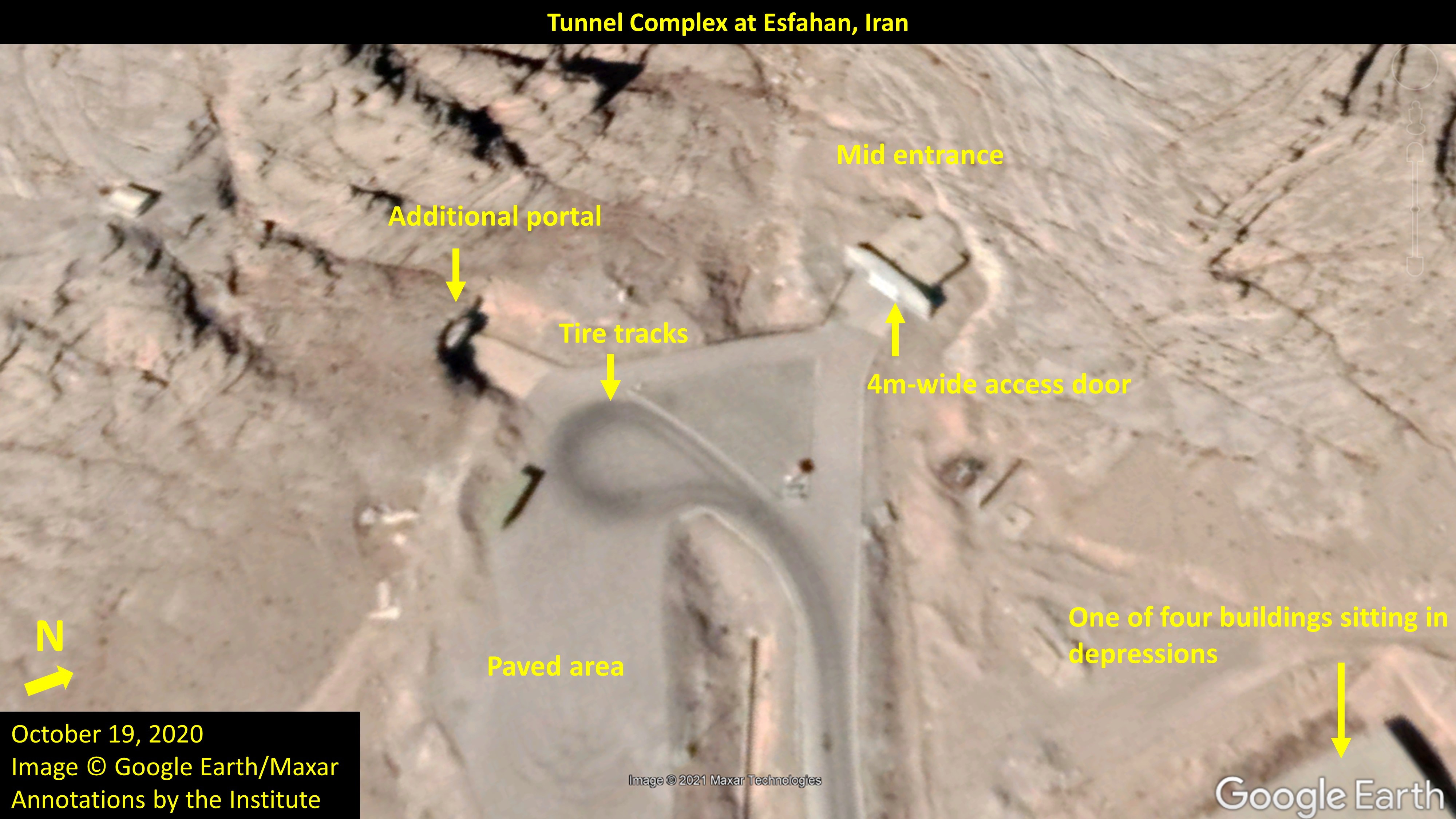
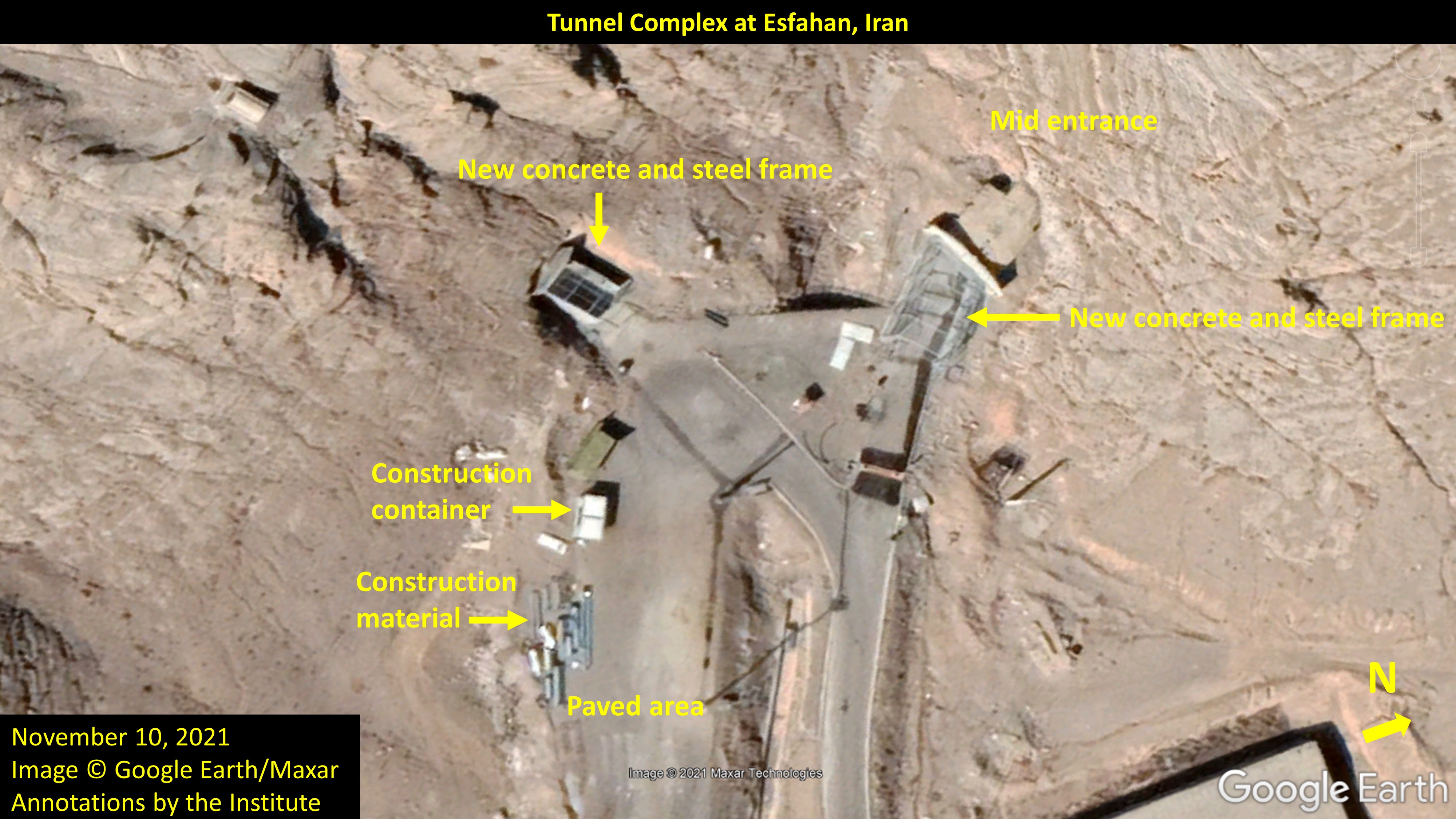
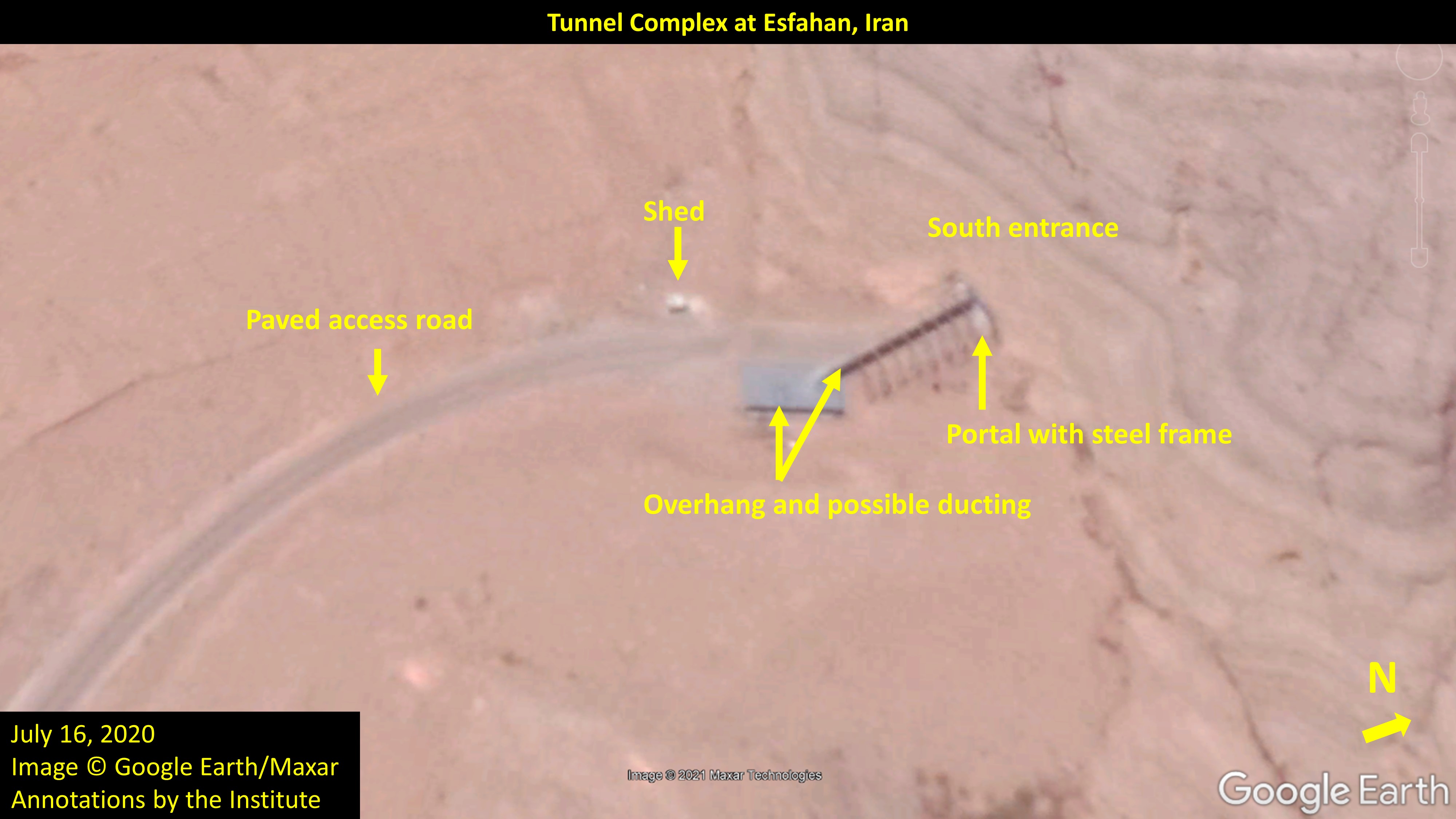
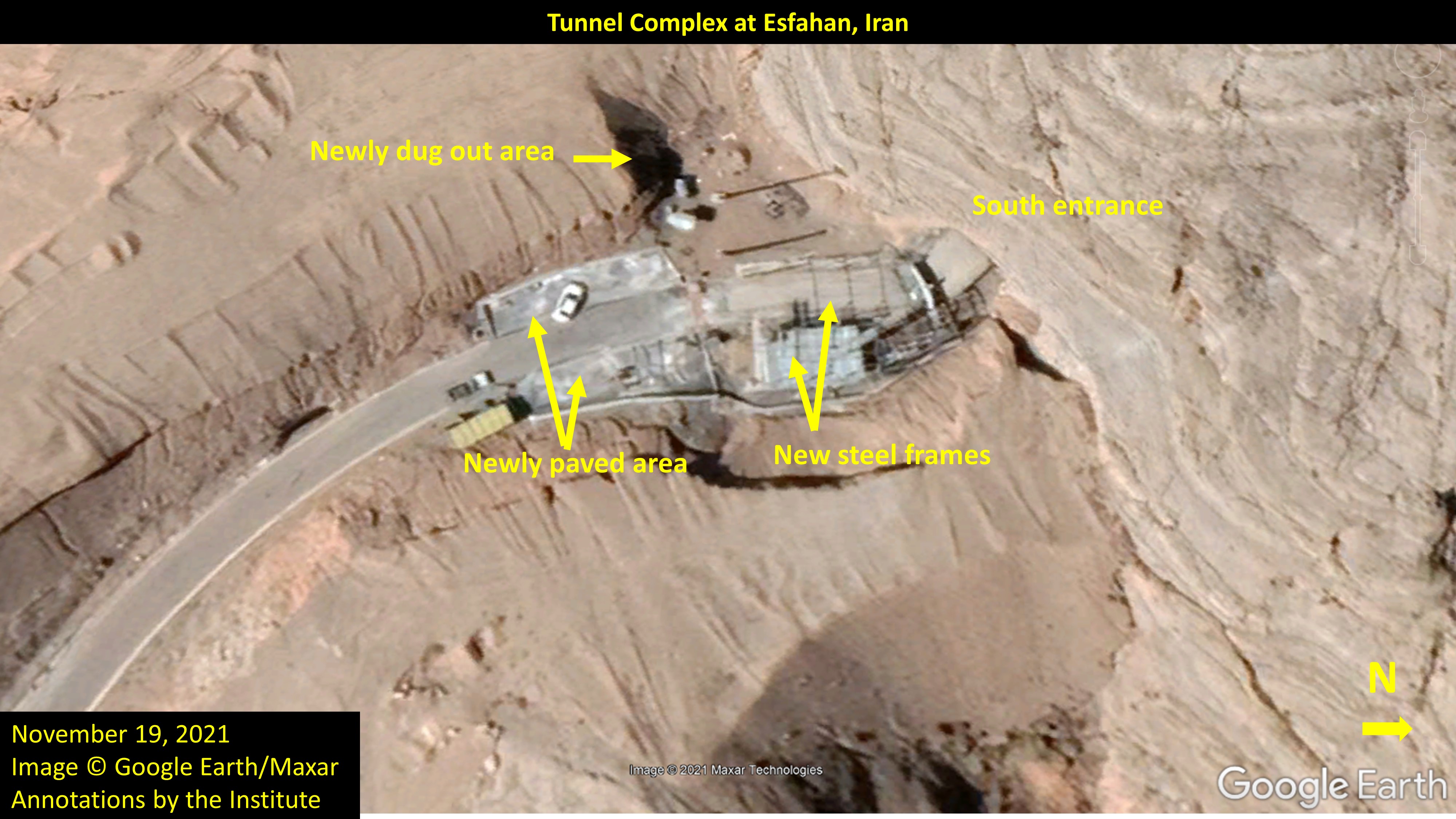
 twitter
twitter